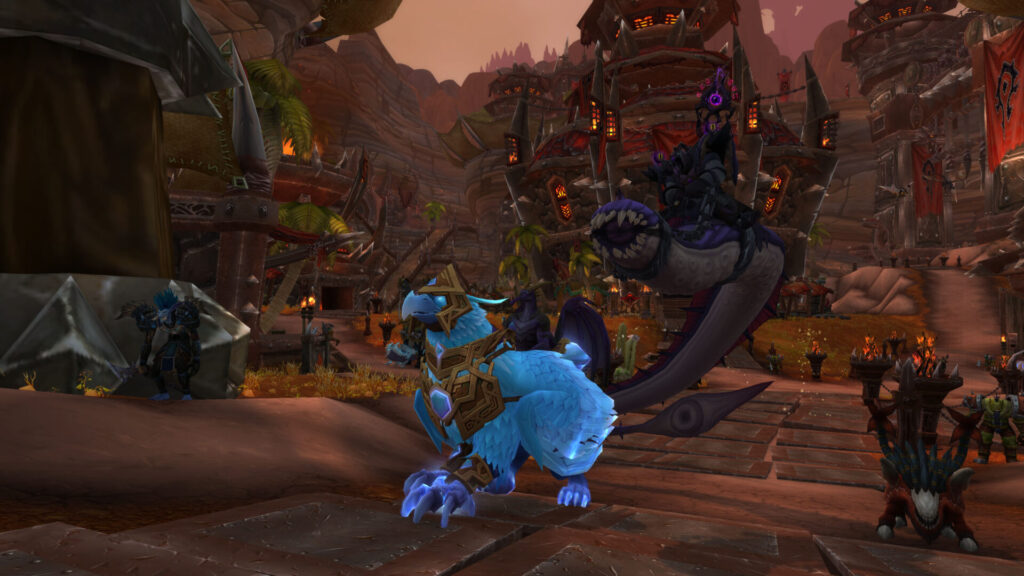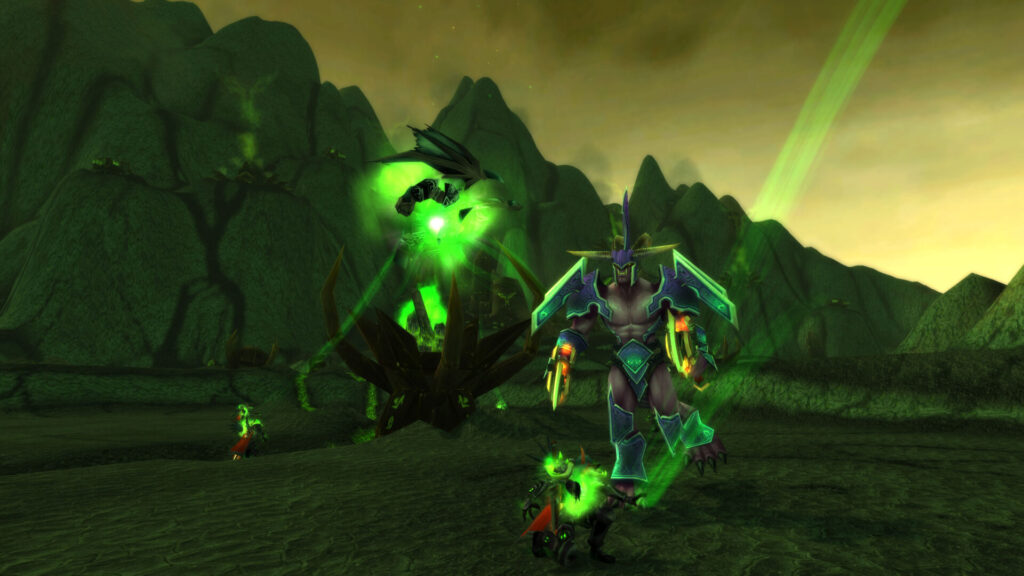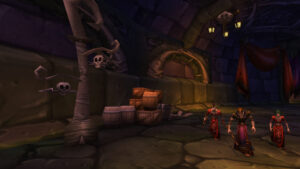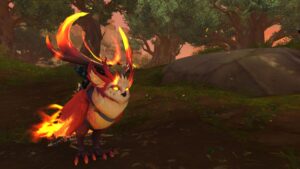
Introduction
Growing your crafting skills in Mists of Pandaria Classic takes time and resources. Buying WoW MoP Classic Gold lets you skip long hours of farming materials and pay for training fees without delay. With extra gold, you can unlock higher-level recipes faster and start making items that boost your power or sell for profit. Whether you want to craft flasks and potions, forge gear for teammates, or create valuable enchantments, having the funds ready lets you focus on building skill levels instead of gathering every herb, ore, or cloth by hand.
Beyond saving time, investing gold in your professions has long-term benefits. Early access to top-tier recipes means you produce high-demand items when prices are highest. Crafting powerful potions or raid-level armor gains you reputation with guildmates and fellow players, who may pay you in gold or trade valuable materials. If you plan to handle an in-game business—buying raw materials at low rates and selling crafted goods at a markup—starting with a gold reserve gives you the working capital you need. By front-loading your profession costs with WoW MoP Classic Gold, you speed through the early tiers and position yourself as a key crafter in your server’s economy.
Using gold to boost crafting also supports other parts of your gameplay. You’ll have extra flasks for yourself when tackling dungeons, constant access to gear enchants for raid prep, and a steady stream of crafted gear for alts. This integrated approach means your gold works twice: once to level professions and again to create items that save you time or earn you more gold in the auction house. With a clear plan and sufficient funds, you turn professions from a slow grind into a reliable source of power—and profit—in MoP Classic.
Choose Your Professions
Before spending any gold on training or materials, pick two primary professions that match how you play. MoP Classic offers many pairs: gathering plus crafting or two crafting trades. For example, Herbalism and Alchemy let you gather herbs and turn them into flasks, potions, and elixirs that sell well or help you in raids. Mining and Blacksmithing work together so you mine ore and forge weapons or armor enhancements. Skinning and Leatherworking suit players who hunt beasts and craft leather gear or armor kits. Each pair covers both resource collection and item creation, reducing your dependence on the auction house for raw materials.

If you prefer crafting only, choose two trades with strong market demand. Enchanting lets you buy green or blue items, break them down for dust and shards, and craft enchantments for weapon buffs and armor stats. Jewelcrafting turns mined gems into high-value cuts and wearable jewelry. Inscription uses herbs to create glyphs, scrolls, and Darkmoon cards, offering steady sales from players who tweak their talents or boost stats. Crafting pairs can earn gold that you reinvest in gathering professions or more crafting trades, steadily increasing your resource pool.
When deciding, consider your play schedule and goals. If you raid every week, Alchemy and Enchanting keep you stocked with flasks and weapon enchants. If you run many dungeons, Leatherworking and Jewelcrafting supply crafted armor kits and socket gems. Note which recipes you want—maybe the Master Mana Potion or the Zen Alchemist Stone—and plan gold purchases to cover both training fees and materials. By matching your profession choices to your needs, you use WoW MoP Classic Gold where it has the biggest impact, powering up your crafting path with clear purpose.
List Trainer Fees and Material Costs
Each profession tier in MoP Classic has a trainer fee you must pay before you learn new recipes. These fees start low and rise at higher skill brackets. For most crafting trades, fees break down roughly as follows:
- 1–75 Skill: 1–2 gold total
- 75–150 Skill: 5–10 gold total
- 150–225 Skill: 15–25 gold total
- 225–300 Skill: 30–50 gold total
Gathering trades have no fees but require time to collect nodes. To level a crafting profession from 1 to 300, expect to spend around 70–90 gold on trainer fees alone.

Raw materials vary by profession. Here are sample costs for key trades at typical auction house rates:
| Profession | Key Material | Estimated Cost per Stack (20–40 units) |
|---|---|---|
| Alchemy | Green Tea Leaf | 8–12 gold per 40 |
| Snow Lily | 10–14 gold per 20 | |
| Blacksmithing | Trillium Bars | 5–8 gold per 20 |
| Ghost Iron Ore | 3–5 gold per 40 | |
| Leatherworking | Sha-Touched Leather | 4–6 gold per 40 |
| Wind Scales | 3–5 gold per 40 | |
| Jewelcrafting | Tiger Opal | 1–2 gold per 20 |
| Vermilion Onyxia Scale | 8–12 gold per 10 | |
| Inscription | Alabaster Pigment | 2–4 gold per 40 |
| Imperial Manta Ray | 1–2 gold per 40 |
If you choose two crafting trades, multiply the material needs by two and plan for roughly 200–300 stacks of primary herbs or ores. Add these figures to your trainer fee total, then include a buffer of 10–15% to cover price swings or reagent losses. For example, leveling Alchemy and Enchanting to 300 might cost 80 gold in fees plus 150 gold in materials, for a base of 230 gold. With a 15% buffer, aim for about 265 gold in WoW MoP Classic Gold. Having this clear breakdown lets you order exactly the amount you need and get to crafting without delay.
4. Estimate Total Gold Needed
With trainer fees and material prices listed, add them up to find your total WoW MoP Classic Gold target. Start by summing fees for both professions: if Alchemy fees total 45 gold and Enchanting fees total 35 gold, your fee subtotal is 80 gold. Next, add material costs: suppose you need 150 gold of herbs for Alchemy and 120 gold of arcane crystals and dust for Enchanting, for a material subtotal of 270 gold. Combine those figures:
| Category | Gold Amount |
|---|---|
| Trainer Fees | 80 |
| Materials | 270 |
| Subtotal | 350 |
To cover price shifts or reagent losses, add a buffer of 15%. Multiply 350 gold by 1.15 to get 402.5 gold. Round up to 405 gold for a clean order amount. This final figure—405 WoW MoP Classic Gold—is the total you need to cover fees, materials, and a safety margin. Having this clear number prevents underordering, which would slow your progress, and avoids overordering, which ties up excess funds.
5. Set Your Gold Budget
Now that you need 405 WoW MoP Classic Gold, break that total into two pools: Trainer Fees and Materials. A budget table shows how much to allocate to each pool:
| Pool | Purpose | Amount (gold) |
|---|---|---|
| Trainer Fees | Pay for recipe tiers | 80 |
| Materials | Buy raw crafting items | 270 |
| Buffer & Fees | Price swings & mail fees | 55 |
| Total | 405 |
Use this table as your shopping guide. When the gold arrives, spend 80 gold at profession trainers first. Then, spend 270 gold on bulk materials—herbs, ores, dusts, and crystals. Save the 55-gold buffer for any unexpected price hikes or small in-game mail fees when you send materials between alts. Keeping your pools separate prevents you from dipping into the wrong fund and ensures each step of the profession boost goes smoothly.
6. Buy WoW MoP Classic Gold to Match Your Budget
With your budget set, order exactly 405 WoW MoP Classic Gold. Log into the game and confirm that your character’s mailbox has room. Once gold arrives, check your total balance matches 405 gold. Record the amount in a notepad or addon to track your spending.

Next, allocate funds according to your budget table:
- Trainer Fees – Mail or move 80 gold to your main crafter’s character. Visit Alchemy and Enchanting trainers and pay each fee tier in sequence until you reach skill level 300.
- Materials – Use 270 gold to purchase stacks of herbs, ore, dust, and crystals from the auction house or vendor. Buy in off-peak hours if possible to stretch your gold further.
- Buffer & Fees – Keep 55 gold in your bag or bank to cover any small transaction costs or price spikes.
By ordering the exact WoW MoP Classic Gold you need and following your budget plan, you skip delays and unlock high-level recipes immediately. You’ll move from zero skill to maxed professions in minutes, ready to craft powerful items that boost your gameplay and your gold reserves.
Buy and Stock Materials
Next, use the materials portion of your budget to load up on everything you need to craft at top speed. Visit the auction house during off-peak hours to gather large stacks of herbs, ores, crystals, and glyph pigments. Aim for enough raw reagents to cover every recipe from 1 to 300, storing them in a dedicated bank tab or profession-specific bag. Organizing your materials this way means you can open your crafting window and work straight through without shuffling items or making extra auction house trips.

Craft High-Demand Items
Once your materials are organized, turn your attention to crafting items that players buy regularly. Produce batches of raid flasks and potions, weapon enchant scrolls, and popular glyphs. Making these items in bulk—say, fifty flasks or a hundred enchant scrolls—minimizes the chance you sell out midway through a crafting session. As you list your goods on the auction house, watch how quickly each product moves. If flasks sell out faster than enchant scrolls, shift more of your next batch toward flasks. This real-time adjustment keeps your crafting business agile and profitable.
Reinvest Profits and Track Progress
As your crafted goods sell, funnel a portion of the gold back into restocking materials and paying for any additional trainer fees if you pick up a third profession. Keep a simple journal—whether in a chat window or a notepad—logging how much gold you earned, which recipes sold best, and your current profession levels. Over time, you’ll spot which items yield the highest return and which materials you should buy in larger quantities.
By cycling profits into your crafting setup, you build a self-sustaining loop: your initial WoW MoP Classic Gold purchase pays for trainers and materials, your crafted items sell for more gold, and that gold funds the next round of training and materials. This approach turns your professions into a reliable source of power and profit throughout your MoP Classic journey.





